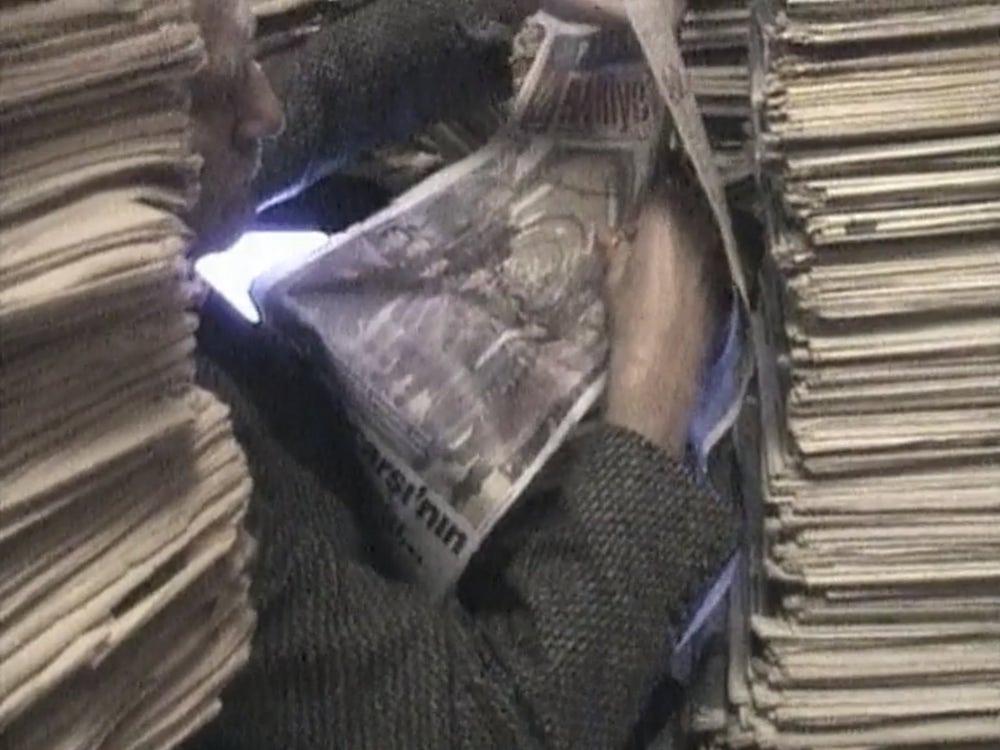The Thrill of Acquisition: Pelin Esmer’s The Collector
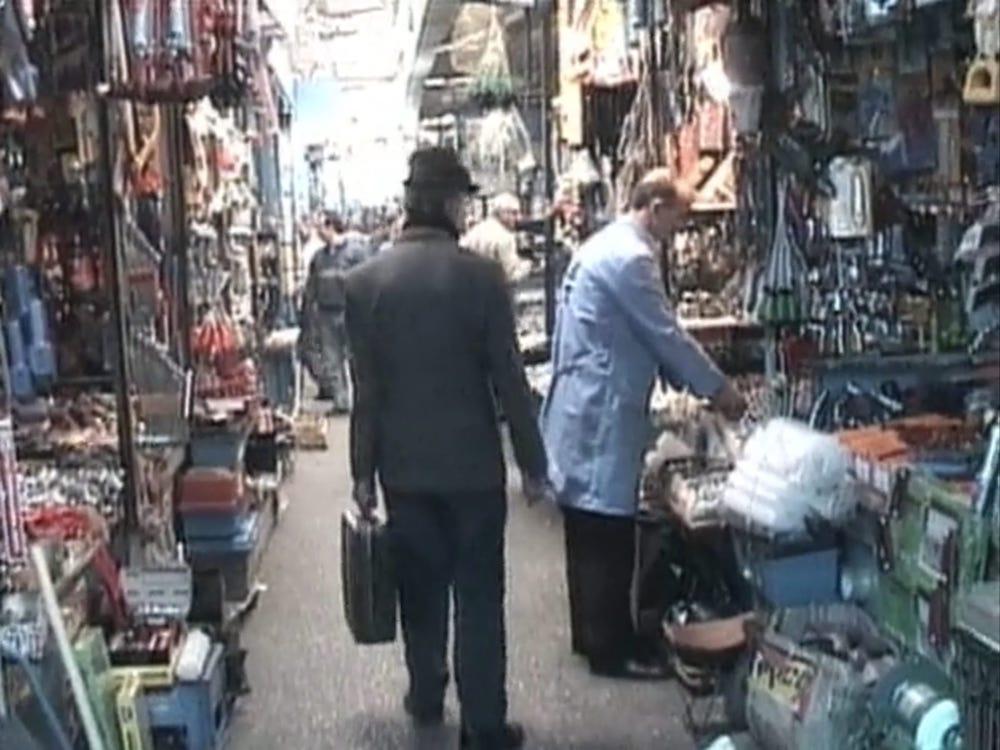
Mithat Esmer (The Collector) looks for a handringer torch that operates without a battery in the markets of Istanbul.
In the eleventh minute of The Collector (2002)—a documentary produced, directed and shot by Pelin Esmer—we enter the promised land: an apartment in Istanbul packed to the rafters with objects of varying sizes and forms. Before reaching the apartment, we follow Mithat Esmer through key parts of Istanbul, notably the Grand Bazaar, a market dating back to the fifteenth-century, and historical districts such as Fener and Kadıköy—which mark the Byzantine and West Asian influenced parts of the city. The selection of these locations is interesting, as it gestures towards firstly, Turkey’s outlier status in Europe as a crossroads; and secondly, the imperial foundations of celebrated trade routes that connect Turkey with Asia, spectres of which continue to be felt in Turkey’s military assertions in the Middle East following the Gulf War, and in its history of violently suppressing Kurdish movements.
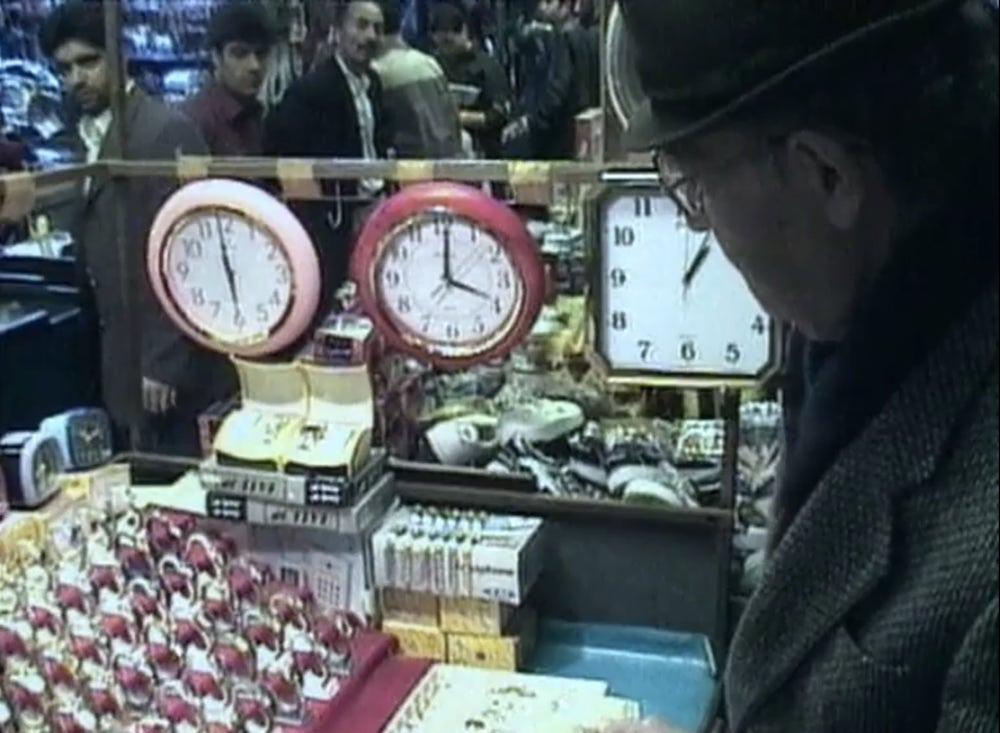
The collector often purchases two units of the same object—one to use and one kept in his collection. In the case of watches, he monitors their operation for a few months to check their efficacy and quality. He refers to this as a “Control period.” Watches in his collection are meticulously labelled with details such as the date of purchase, colour, model, and eventually, the degree of their imperfection.
Once in the apartment, we are presented with the collection. Most notable among these are tall stacks of newspaper that serve as navigational tools in the cluttered landscape. Adding one extra newspaper can make the whole stack topple, the eponymous collector, Esmer’s uncle Mithat tells us. This is an anticipated disorder, varying from one stack to another. It is evident that Mithat Esmer’s relationship to collecting is a complex one: he wishes to ensure that the objects he has accumulated continue to be viewed as collectibles after his demise. Newspapers from the 1950s onwards, magazine issues and books must be stored and archived upon his passing. The documentary, titled Koleksiyoncu in Turkish, never wavers from its focus: the psyche of the collector. Mithat Esmer traces his fascination with collecting to his childhood. At another point, provoked by a friend who demands one of the objects in his apartment, he describes his collectibles as his “children.”

The view upon entering the collector’s apartment. Besides other objects, his collection includes 30,000
–40,000 books, stuffed in the living room of his apartment, which he cannot access due to the lack of space.
In “The System of Collecting,” cultural theorist Jean Baudrillard explains that devoid of its functionality, the collectible’s meaning is “…entirely up to the subject,” such that “All objects in a collection become equivalent, thanks to the process of passionate abstraction we call possession.” Collectibles are distinct from things of functional use, as the latter are less “objects,” more “utility,” their very necessary functionality not making them a mark of subjective personhood (Baudrillard considers his refrigerator to be a “freezing mechanism,” for example). Esmer’s collector seeks failed lottery tickets—the ones which have not won—on the streets of Istanbul, an endeavour most lottery ticket sellers find perplexing.
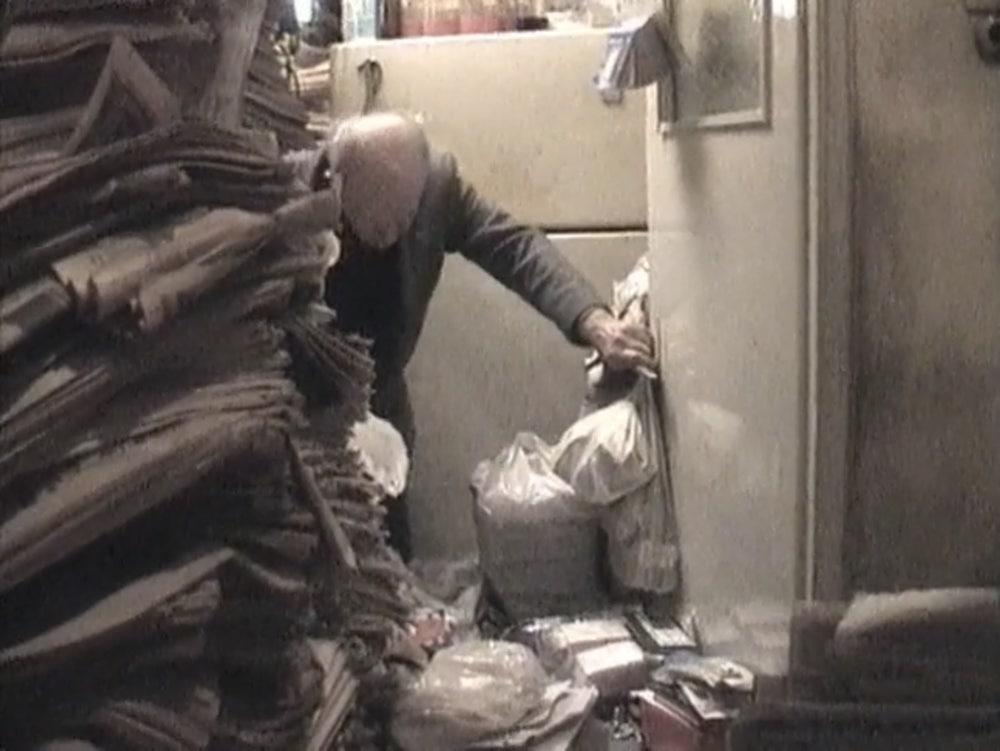
The collector struggles to navigate his apartment.
When the collector in Esmer’s documentary describes the process by which he catalogues watches, with a waiting period to check operational efficacy—“This watch tells perfect time,” he joyfully declares—you witness what philosopher Walter Benjamin means when he states that “The most profound enchantment for the collector is the locking of individual items within a magic circle in which they are fixed as the final thrill, the thrill of acquisition, passes over them.” In a chapter titled “A Marginal System: Collecting” in The System of Objects, Baudrillard writes: “Every object has two functions—to be put to use and to be possessed.” The latter signifies a move towards subjecthood by the subject, and a “pure” objecthood of the possessed object, such that,
“It ceases to be a carpet, a table, a compass or a knick-knack and becomes an object in the sense in which a collector will say 'a beautiful object' rather than specifying it, for example, as 'a beautiful statuette.' An object no longer specified by its function is defined by the subject, but in the passionate abstractness of possession all objects are equivalent. And just one object no longer suffices: the fulfilment of the project of possession always means a succession or even a complete series of objects.”
The question of seriality—multiple objects that define a collection—presses against other limits. The space in the apartment is too little, the habit too esoteric to explain to new landlords. The collector is in a constant state of agony: what to acquire and what to refuse is a continuous struggle of material and monetary constraints. “The newspapers have made the house impossible to live in,” Mithat Esmer complains. He contemplates donating these to a university, although he is not yet willing to part with his collection of books. He mentions giving up the habit of collecting old gold coins: “It is a very difficult and expensive interest.” Collecting is expensive, but the collector does not view the objects in terms of their exchange value. He states clearly that only in the event of a health emergency would he consider selling his collection, as he has an “emotional attachment” to it. Esmer’s documentary shines in its study of her uncle’s psychological state. In a moving sequence, he sits surrounded by reams of newsprint, contemplating that in the event someone were to throw a rock at his window, he would neither be able to repair the window from the outside nor the inside, given the volume of objects stuffing the seams of his apartment. As a result, he would have to leave everything at the mercy of elements. In the indoor scenes, Esmer focuses on how the collection presses in, physically, on the body of the collector—a somatic predicament.
Mithat Esmer estimates holding a full collection of over sixty different magazines. He always purchases two copies of each newspaper—one for reading and clippings, and the other for the collection.
The other constraint at play is time. The collector’s life is finite, and many of the objects he collects will exceed the frame of his existence. The collector prepares a catalogue with details (when an object was purchased, descriptive markers, its raison d’être in the collection), so as to evade the erasures of an aging memory. The afterlife of a collection is indeterminate, but the collector assures us that the collection “…carries yesterday and tomorrow within itself.” To collect then, is to care for the past and future—times that precede and will follow one’s own lifetime. But the collector clarifies immediately that building a bridge between the past and the future is not what motivates him. “I see collection as a hobby, not as a mission,” he declares. “I live almost like its slave.”
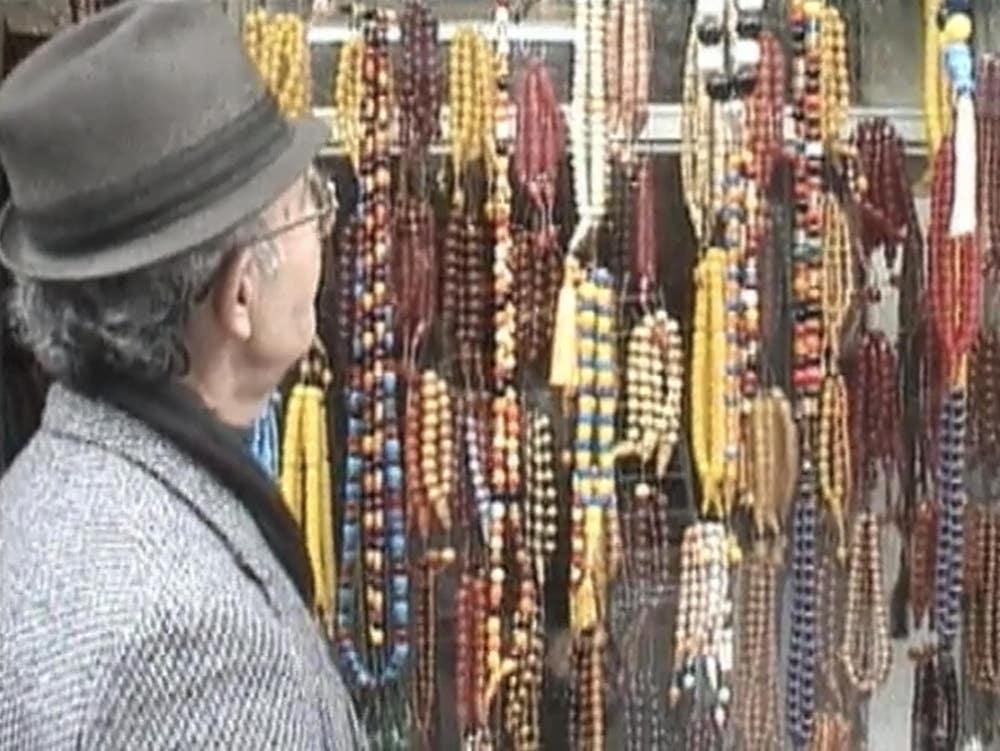
The collector considers purchasing some rosary beads from a streetside store in Istanbul.
To read about other collectors, please click here and here.
All images from Koleksiyoncu: The Collector by Pelin Esmer. Istanbul, 2002. Images courtesy of Sinefilm and the artist.

